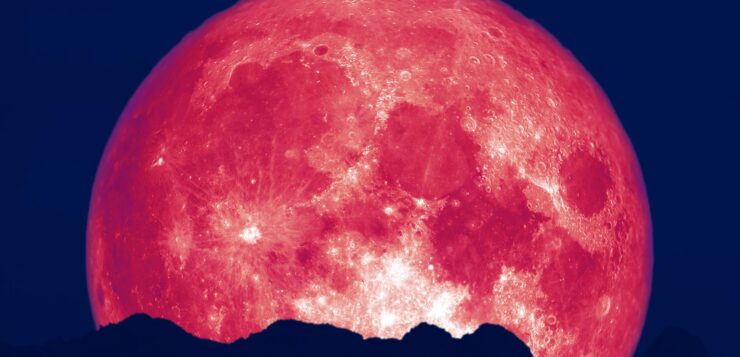By Sarah Molano and Ashley Strickland, CNN
(CNN) The last supermoon of 2021 — the «strawberry» full moon — will rise Thursday.
Viewers will see a large golden (sorry, not strawberry-colored) moon for two to three nights, according to EarthSky.
This supermoon becomes completely full at 2:40 p.m. ET on Thursday afternoon. It won’t be fully visible in North America until later in the evening during «moonrise,» when the sun sets and the moon ascends into view. But viewers all over the world can see the strawberry moon, depending on where they are in respect to the horizon.
Definitions of a supermoon can vary, but the term generally denotes a full moon that is brighter and closer to Earth and thus appears larger in the night sky.
«The term ‘supermoon’ is much more recent and has come to be any full or new moon within 90% of its closest approach to Earth,» wrote Christine Shupla, education and public engagement manager at the Lunar and Planetary Institute, in an email. «By that definition, the full Moon on June 24 is also a supermoon, even though it is not as close as the full Moon was in May or April.»
Some stick to a stricter definition of supermoon, like Noah Petro, a lunar scientist at NASA’s Goddard Space Flight Center. For him, the only real supermoon is the one closest full moon of the year, which was last month’s «flower» moon. Still, he acknowledged that others use the definition Shupla provided.
«That there is no standard definition is a bother, but anything that gets people interested and excited about looking at and wanting to know more about the Moon is a great thing!!!» Petro wrote in an email.
The strawberry moon is the first of four full moons of the summer season. Its name, which originates from Indigenous peoples, refers to the ripening of strawberries and other fruits that occurs in late spring and early summer.
The Sioux, Chippewa and Ojibwe communities, for example, refer to the June full moon as the strawberry moon, according to the Western Washington University Planetarium website. Other groups have given it slightly different names that still give a nod to June’s fruit-bearing season, such as the Creek term «kvco-hvsee,» or «blackberry moon.» The Haida call it «gáan kungáay,» meaning «berries ripen moon.»
Many tribes, however, have monikers for June’s full moon that have nothing to do with fruit, including the Potawatomi tribe’s «msheke’kesis,» or «moon of the turtle» and the Tlingit’s «at gadaxeet dis,» or «birth moon.»
The June full moon’s European alternatives are «honey moon» or «mead moon,» according to The Old Farmer’s Almanac. This may be due to June’s reputation for being the month of marriages, and could be where the use of the term «honeymoon» for post-wedding vacations originated.
Typical of a normal year, 2021 has 12 full moons. (There were 13 full moons last year, two of which were in October.)
Here are all of the full moons remaining this year and their names, according to The Old Farmer’s Almanac:
July 23 — buck moon
August 22 — sturgeon moon
September 20 — harvest moon
October 20 — hunter’s moon
November 19 — beaver moon
December 18 — cold moon
Be sure to check for the other names of these moons as well, attributed to their respective Native American tribes.
Here is what else you can look forward to in 2021.





